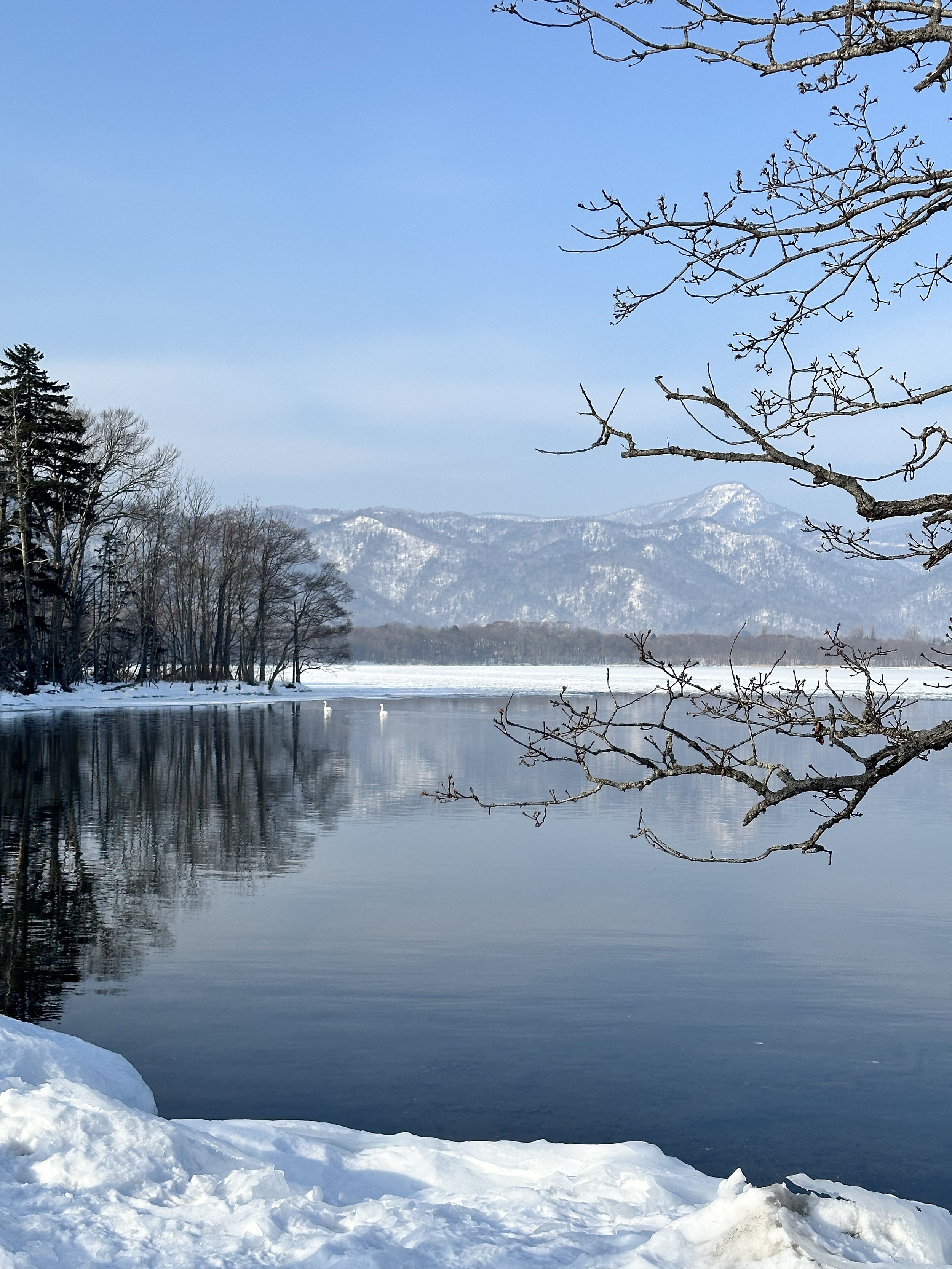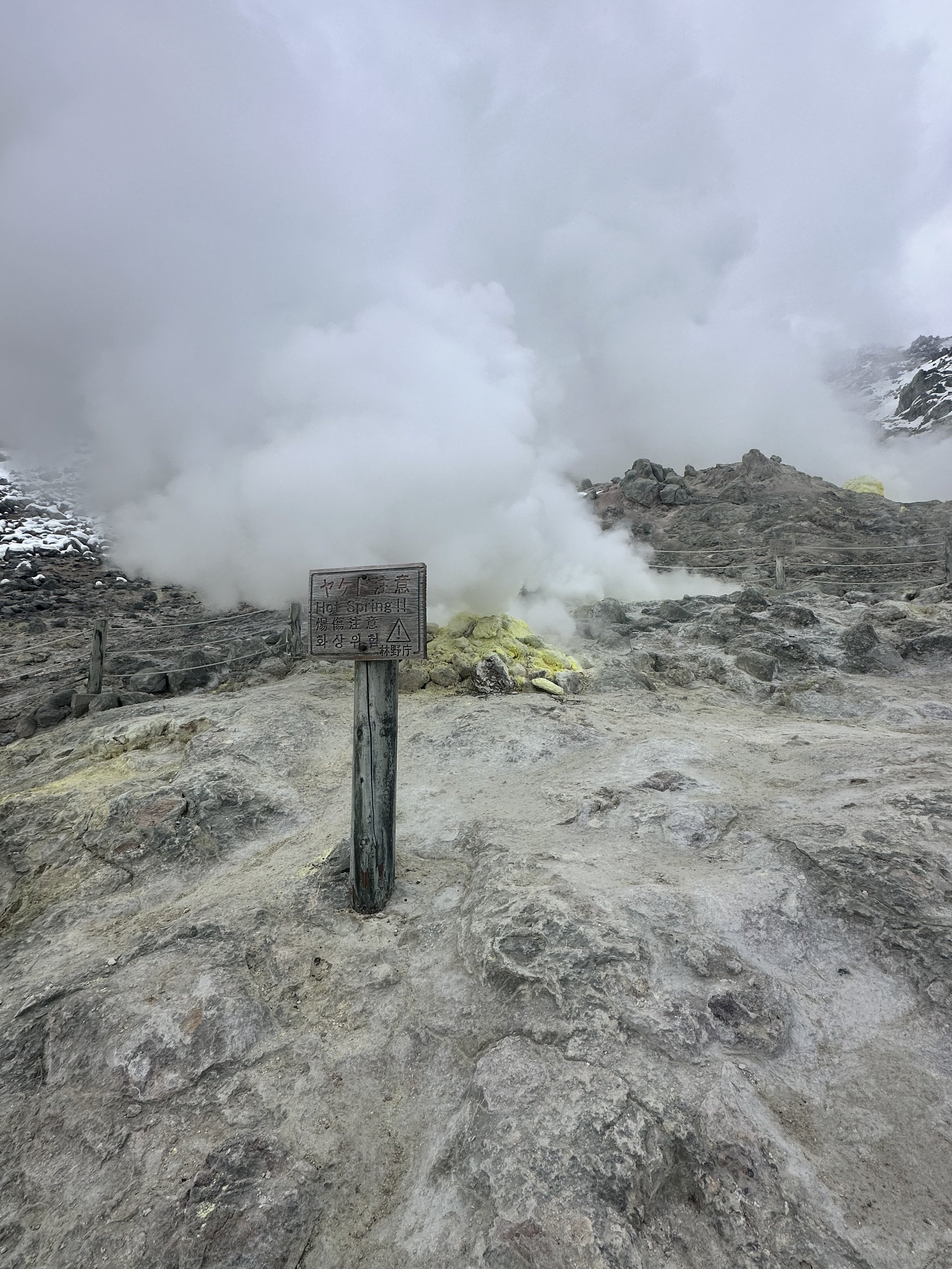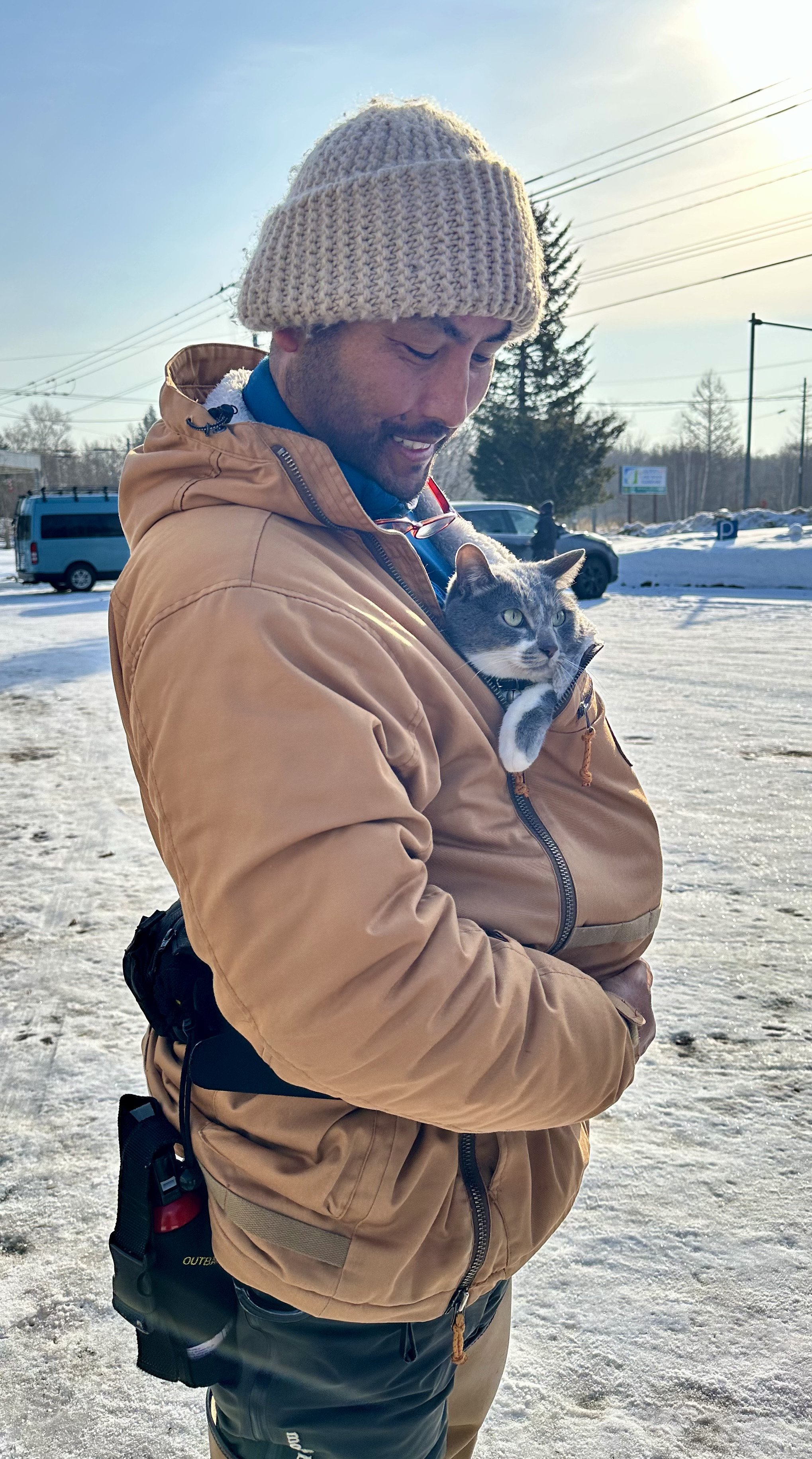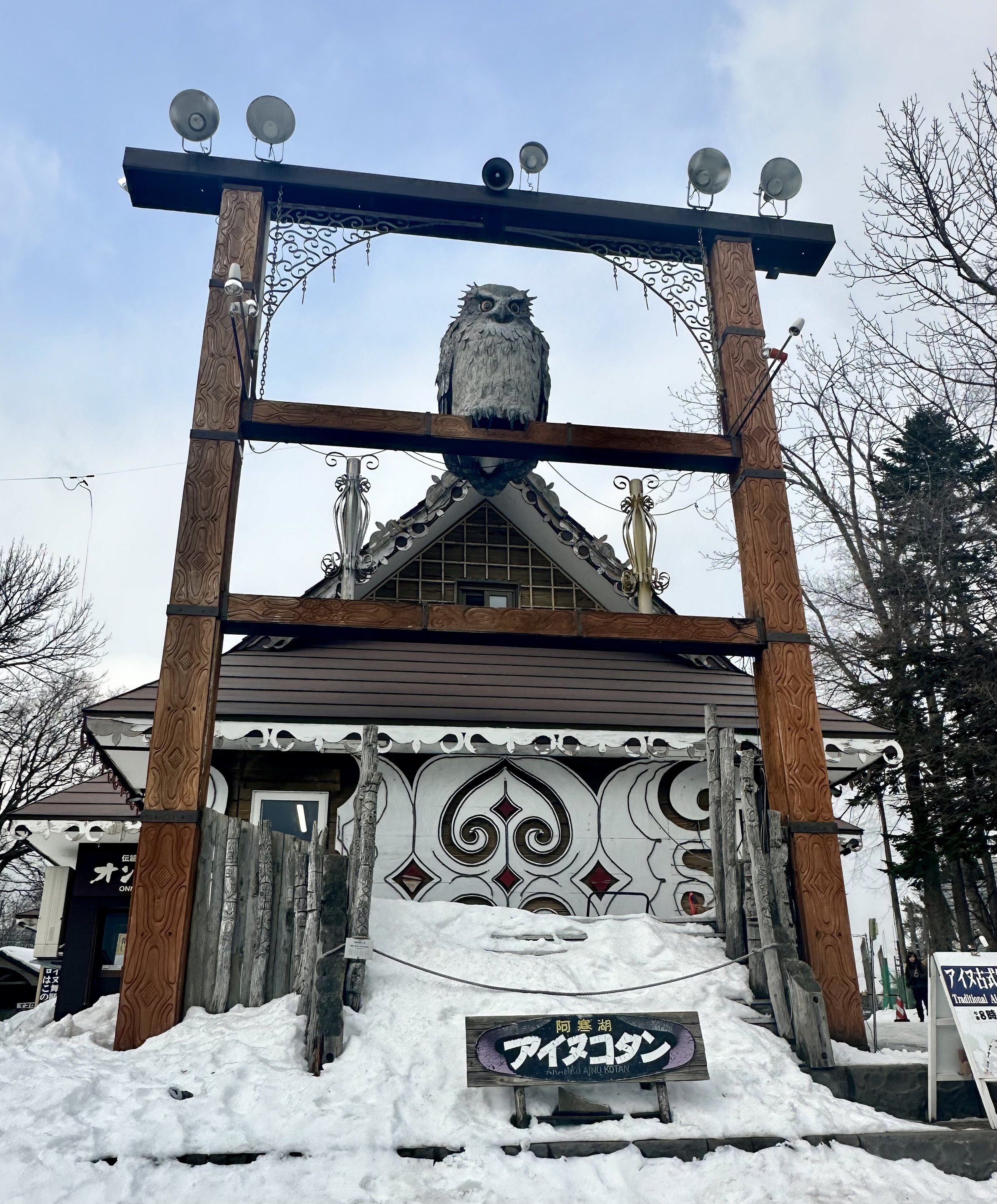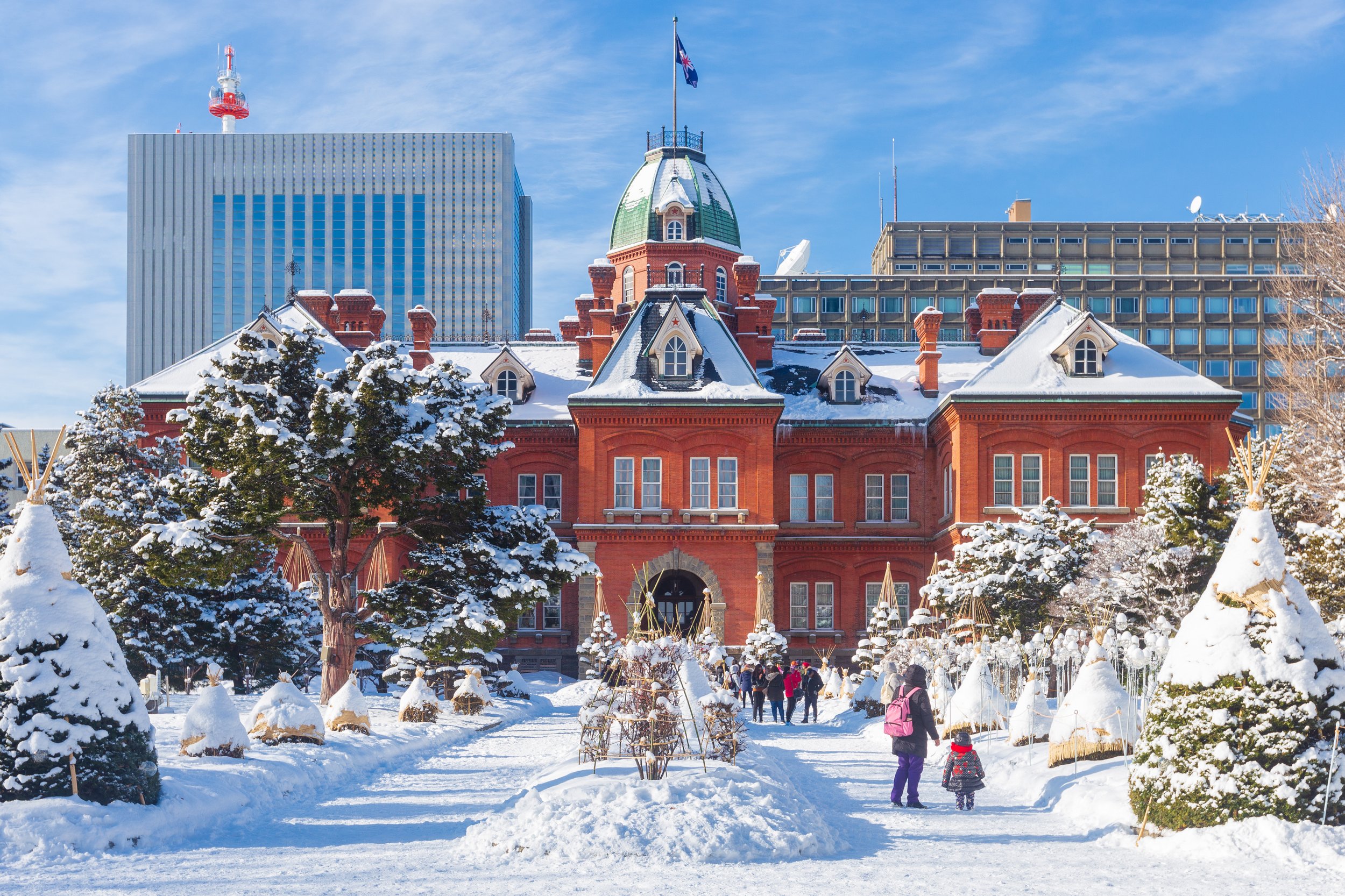Betwixt the Bustle
In a country laying claim to the world’s most densely populated city, Hokkaido, Japan’s northern island, protects and provides access to one of its last regions of true wilderness.
Written by Bridget Williams
Hokkaido was not the Japan I expected. Deplaning at the sleepy airport in Kushiro, there was nary a geta-shod Geisha, sumo wrestler, or Harajuku girl in sight (although I'd spy the latter two several days later in Toyoko). Instead, just outside the terminal were super-sized renditions of this island's most famous inhabitants: Ezo deer, Ussuri brown bears (a smaller cousin of the grizzly), Japanese cranes, and Blakiston's fish owls. Far from EPCOT's version of the Land of the Rising Sun, Hokkaido, the northernmost prefecture in Japan and the country's second-largest island, is graced with mild, low-humidity summers, sub-zero winters with heavy snowfall and a culture that's distinct from the mainland. After a week and some reflection, I surmised that what I experienced was far more authentic than the saccharine version I had anticipated.
Jet-lagged and famished following a 24+ hour travel day, arriving on Hokkaido under cover of darkness had us wondering if it was evening or predawn. Our hosts, representatives from the Japanese National Tourism Organization (japan.travel/en/us/), ushered us to a van for the one-hour drive to Teshikaga Town in Eastern Hokkaido, one of Japan's few remaining places of true wilderness. We made quick work of beef and fish hand rolls washed down with Hokkaido corn blend tea that smells of freshly baked cornbread. Exclusive to the island, the unsweetened beverage was the first of many forays into culinary parts unknown.
The pungent smell of sulfur greeted us outside Oyado Kinkiyu Bettei SUIKAZURA hotel (suikazura.jp/en), set alongside a hot spring river in a tiny village of a few thousand inhabitants. Slippers sat at the point where my guestroom's vestibule stepped up into the sleeping space, complete with tatami floor mats and a pair of low twin-sized platform beds. A second pair of slippers awaited outside the bathroom, which was a welcome introduction to Japan's affinity for high-tech, derriere-washing and warming toilets. It's a multi-function luxury that extends to even the lowliest gas station loo, which are always clean enough to please kawaya kami, the toilet god and household deity of Shinto, Japan's native belief system.
My bewildered body clock allowed me to have the hotel's onsite Kawayu Onsen all to myself (thankfully, given my nervousness about following the rules). There are more than 3000 onsen (geothermal hot spring baths) found across Japan, and specific rules for enjoying them include showering before entry, pulling up your hair, and bathing in the mineral-rich waters in your birthday suit. The most traditional onsens require that visible tattoos be covered. Following a detoxifying dip, I headed to the breakfast buffet, where I grabbed a bento-style plate and proceeded to fill the little squares with an array of mystery meats and vegetables of varying textures and viscosities, comforted in the knowledge that if my experimentation went awry, I had a stash of protein bars back in the room.
Across three days that included canoeing, snowshoeing, and skiing, a common thread among our activity guides was a deep love of the region's natural wonders, including old-growth forests, nine active volcanoes, and pristine caldera lakes. One of these, Lake Kussharo, is popular among canoers and anglers. In the winter, when chunks of ice make the lake unnavigable, enthusiasts take to Kushiro-gawa, the only river flowing out of the lake. You can travel all sixty miles of it to reach the Pacific Ocean.
Our animal-loving guide, Yoshida Satoshi—who greeted us upon arrival at Kussharo Eco Tours (kussharo-eco.com) with an injured cat contentedly convalescing in the warmth of his insulated coveralls—asked if he could bring along his well-behaved collies, Aki and Yuki, adorably outfitted in matching onesies. We floated along, admiring the pristine setting, and stopped at a natural island for hot chocolate and crispy honey-sweetened pastries made by Satoshi's wife. After our chilly excursion, we warmed up with lunch at cozy Poppotei restaurant (/poppotei.wixsite.com/home/en) where I thoroughly enjoyed their Mashu-no-Megumi ramen noodles topped with locally sourced vegetables and floating in a salty cow’s milk broth (comically translated as "bovine breast milk").
Our animal-loving guide, Yoshida Satoshi.
You can look at but not touch the deep and pristine waters of Lake Mashu, as no trails lead to the shores of this caldera lake in Akan Mashu National Park (japan.travel/national-parks/parks/akan-mashu). A lack of contaminants lends a unique deep blue color called "Mashu Blue." While two observation decks are accessible via car, during winter, when as much as 600 inches of snow falls, the road is closed, and the caldera's rim is fully accessible to those willing to strap on snowshoes and work up a sweat in search of sights. At the turnaround point of our trek, our guide, Shinobu Katase, served hot lemonade sweetened with maple syrup tapped from trees on his property. Our tour departed from the main visitor's center, whose large gift shop sells "Mashu Blue" jewelry and local treats like caramels, seafood-flavored potato crackers, and yummy freeze-dried strawberries coated in creamy white chocolate.
Prior to 1868, the year that Japanese mainlanders founded Sapporo, Hokkaido's largest city, the indigenous Ainu people had been subsisting as hunter-gatherers as far back as the 12th century. Paralleling the plight of Native Americans, the Ainu saw their language and lifestyle outlawed and their traditional lands seized in the 1800s before gradually reclaiming their rights and legacy in the latter part of the 20th century. In the 21st century, the government of Japan has made efforts to revitalize the Ainu culture, uniquely in tune with the Hokkaido’s abundant natural beauty.
On the shores of Lake Akan, the Akanko Ainu Kotan (akanainu.jp/en) is one of the largest Ainu settlements, introducing the Ainu culture through a multisensory experience encompassing dance, music, art, and food. At the Ikoro theatre, we were greeted by Ainu guide and sculptor Kengo Takiguchi, a man with gentle eyes and a warm smile who learned English while living in Australia. Dressed in traditional winter clothing, Takiguchi taught how to make a mukkuri, a bamboo instrument that vibrates to produce a jaw harp-like sound, before leading us on a snowshoe tour around the lake to show us how his people relied on the trees and plants of the natural world to survive the frigid winters. We dined on traditional Ainu fare, including deer sashimi and seasonal mountain vegetables at Poronno, which has been in business for over four decades. The restaurant sits in the middle of a steep street lined on both sides by artisan shops laden with carvings of Blakiston's fish owl, the largest living species of owl that the Ainu revere as a divine being.
Ainu guide and sculptor Kengo Takiguch making a makkuri.
Going from tranquil to frenetic in the span of a few hours, we made our way from the sleepy Nakashibetsu Airport to Sapporo, a city of nearly two million inhabitants and our "base camp" for exploring the Kokusai Ski Resort. Located in the heart of the neon-lit urban jungle and within a 15-minute walk of more than 3,500 restaurants, OMO3 (hoshinoresorts.com/en) is a youthful offering from Hoshino Resorts with a motto of "staying up late happy." The cheery lobby displays a board with conditions at all six nearby ski resorts, a DIY ski-waxing area, and a large GO-KINJO map, a whimsical creation depicting the neighborhood's attractions and staff recommendations. The property's "OMO Rangers" offer late-night bar and restaurant tours. The all-day grab-and-go area in the lobby provides locally sourced culinary delights, such as a black bean paste with butter on bread that's a regionally popular breakfast item.
"JAPOW" is what they call the iconic powder of Japan, and for our ski day at Sapporo Kokusai (sapporo-kokusai.jp/en), one of the snowiest ski resorts in Japan, we had plenty of it. OMO3 offers a complimentary shuttle to the resort, about an hour away, amid the Shikotsu-Toya National Park. The drive provides a prolonged view of a picture-perfect winter wonderland as it follows the twists and turns of the Chitose River. Compared with the US, where a one-day pass can cost as much as $300, a lift ticket at Sapporo Kokusai is approximately $30 ($37 with a delicious ramen lunch (après the Japanese way); you can add on skis, boots, poles, a jacket, pants, and goggles for another $60.
ThAkanko Ainu Kotan.
After some serious stretching, awkward balance-busting drills that included single-leg skiing, and a few bunny hill runs, our ski instructor announced that our amateur group was ready for prime time and escorted us to the top of a green run. Enjoying the confidence boost from successfully navigating a graceful exit off the ski lift and the near whiteout conditions that gave us little notion of the slope's steepness, we made our way down mostly unscathed, save a few close encounters with flailing beginner snowboarders and an ill-placed but well-padded tree mid-way down the run.
Back in Sapporo, we ate and shopped our way through the neighborhood. At Semina (trattoriasemina.com), we savored a Japanese take on Northern Italian cuisine. In this densely packed city, non-descript multi-story buildings contain a plethora of culinary delights, as we discovered when an elevator opened on the 5th floor and into Yozorano Genghis Khan Susukino Kosatenmae, offering an elevated view of the city's famous 50-foot-tall LED Nikka billboard. This Hokkaido take on Mongolian-style barbecue is a 90-minute all-you-can-eat and drink feast of marinated lamb, beef, pork, and vegetables cooked on a special grill with a raised mound in the center. Our hosts reveled in getting their American guests to try local delicacies, including Shiokara—squid fermented in its viscera and salt—and voraciously documenting our reactive expressions on their iPhones. The scene repeated at Sapporo's Nijo Market, where I slurped down an enormous oyster but passed on the uni.
The lobby of OMO3 in Sapporo.
Tanaki Koji shopping street in Sopporo.
A gallery at teamLab Borderless digital art museum in Toyoko.
When our hosts suggested capping off our final evening in Sapporo by experiencing the shime (late-night) parfait culture, I fully expected a basic soft serve layered with fruit and granola, so I was ill-prepared for the towering, elaborately layered, and eye-popping creation far superior to what one would typically seek out at a greasy spoon after last call. And, if you're still not ready to call it a night, head to the Mega Don Quijote Sapporo Tanukikoji Honten. With more flashing lights than a Vegas casino, I must credit one of my travel mates for the intro to this always-open multi-floor Target-meets-Walgreens on steroids and the wonderful world of Japanese skincare products.
Shime (late-night) parfait.
We had one day in Tokyo before heading back to the US, so to fully appreciate the sprawling nature of this city of 14 million in such a brief timeframe, we headed up 751 feet to the open-air observation deck at Shibuya Sky (shibuya-scramble-square.com), where you can marvel at Shibuya Crossing. During the busiest times, as many as 2,500 people cross the intersection every two minutes.
After admiring the layered and billowy yet tailored looks of the well-dressed women hustling across the famous intersection, I was excited when our wandering landed us in an upscale department store, allowing me to try to re-create the look. It was a humbling experience to say the least. "You need big size," said the petite clerk, as I held up what seemed to be an oversized dress. I knew her words were not meant as intentional barbs, just pulled from a limited well of English vocabulary. They stung nonetheless, and instead of feeling chic, I looked like someone whose checked bag was overweight, and they were piling on layers to save on excess baggage fees.
Moving onto the famous Takeshita Street in Harajuku, I marveled as people seemed to flow out of side streets like water from an open tap to form a raging current of bodies making their way past sweet shops, "cute couture" clothing boutiques and places offering interactions with various animals including otters, puppies, and pigs.
One of Sopporo’s most famous landmarks the Former Government Hokkaido Government Office was built in 1888 and modeled on the Massachusetts State House.
The sizzle of the iron table grill during lunch on Tsukushima Monja Street (monja.gr.jp)...the crush of the crowds…the discordance of hearing Taylor Swift tunes blaring on every street corner…the smell of seafood at breakfast, lunch, and dinner (particularly pungent to this piscine eschewer)…the constant pulse of neon lights...my head was on a swivel as I tried to take it all in.
The frenetic pace and sensory overload are a continuity of controlled chaos harnessed beautifully by the teamLab Borderless digital art museum (teamlab.art/e/borderless-azabudai/), which opened in Central Toyko in February of this year. Here, dynamic projection graphics flow from room to room, react to one another and morph along with the movement and interaction of onlookers. There's no map as you make your way through the varied installations, which left me beguiled by bewilderment, a sensation I experienced more than once during this varied journey through Japan's natural and humanmade wonders.

